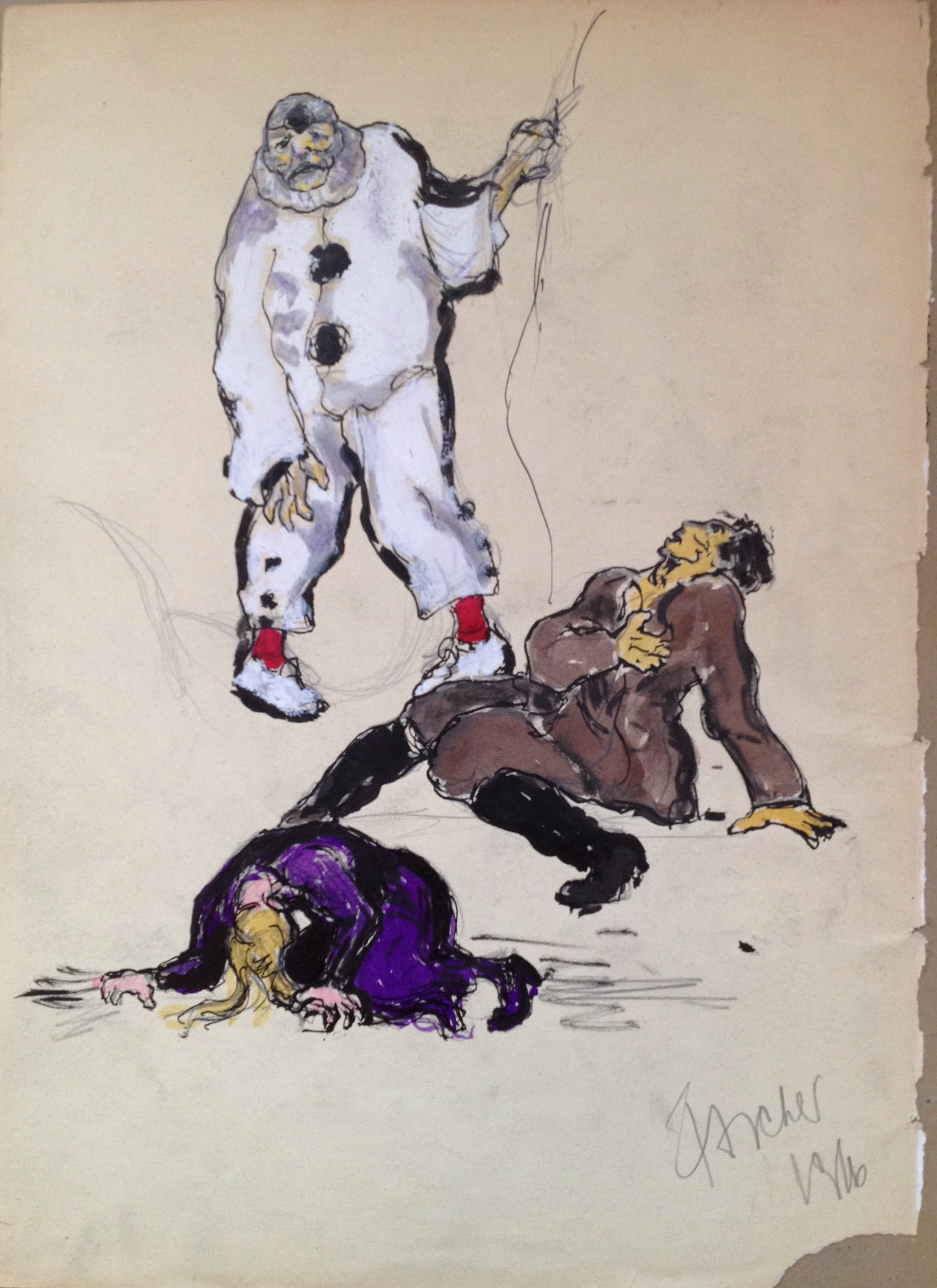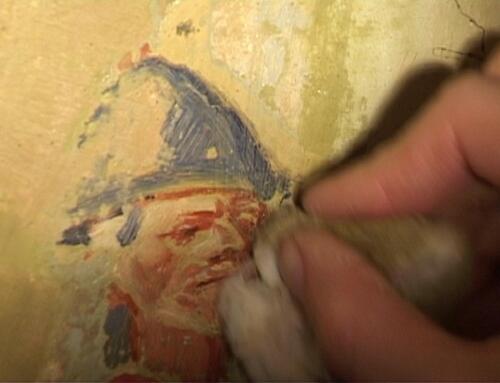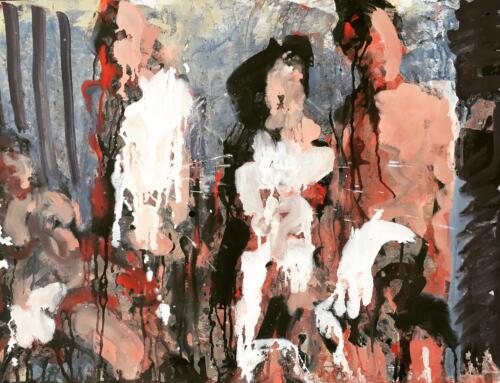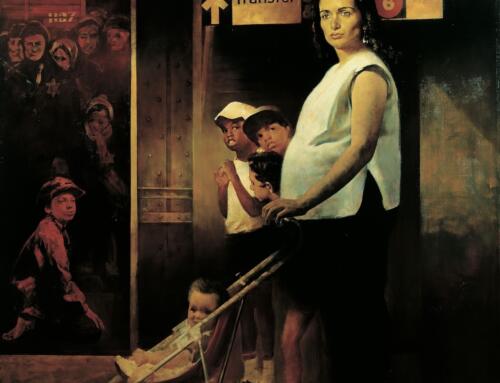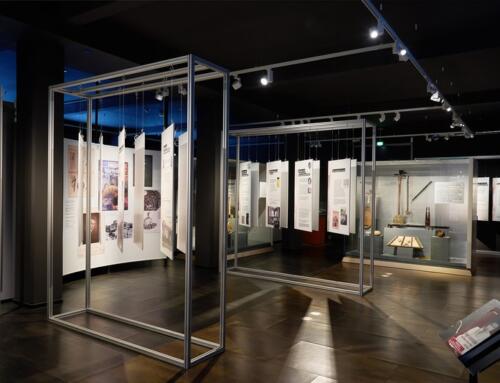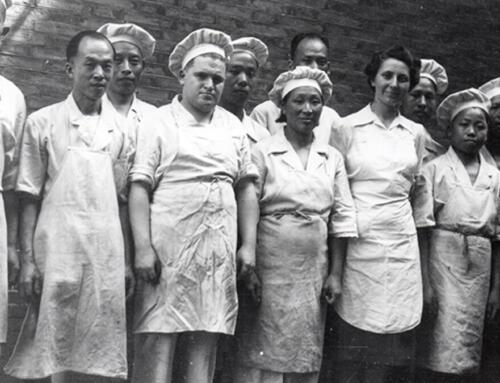Dear Friends,
As I am writing this newsletter, the snow is (still) melting here in New York after one of the largest snow storms in recent history. At the same time, Carnival is in the air – at least for our German friends. What better moment to introduce Fritz Ascher’s clowns – a theme that occupied the artist throughout his career. It was certainly no coincidence that Ruggero Leoncavallo’s opera “Pagliacci” (Clowns) was hugely popular in Weimar Republic Berlin – especially the performances with the best known Tenor of his time, Enrico Caruso, as Canio.
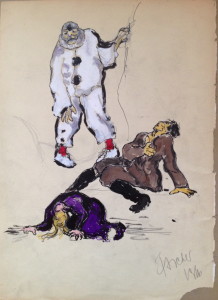
Fritz Ascher, Bajazzo, 1916
In the opera, Canio, the head of a troupe of comedians, finds out that his wife Nedda has an affair with the farmer Silvia. During the performance he kills both his wife and her lover. Caruso was the first gramophone star to sell more than a million copies with his 1907 recording of ‘Vesti la giubba’ (‘Put on the costume’), the most moving aria that is sung at the conclusion of the first act, when Canio discovers his wife’s infidelity, but must nevertheless prepare for his performance as Pagliaccio the clown because “the show must go on” (listen to the 1907 recording of the famous aria: https://www.youtube.com/watch?v=96Q6weZFIbY&feature=iv&src_vid=yp3Vi1CspgE&annotation_id=annotation_134532).
Canio’s pain exemplifies the entire notion of the “tragic clown”: smiling on the outside but crying on the inside. Wiebke Hoelzer will examine the role of the clown in Ascher’s oeuvre in the catalogue accompanying the upcoming Fritz Ascher retrospective.
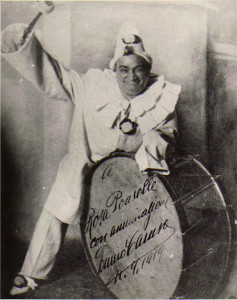
DONATION
We are very thankful to Manfred Wellnitz from Berlin, who donated Fritz Ascher’s remaining art book library to the Fritz Ascher Society. Manfred Wellnitz was a student at the Technical University Berlin when he came to Ascher/ Graßmann via TUSMA [“call and students do everything”]. He helped Ascher to move in 1969, came to visit once a week, cleaned the apartment and took him out for walks until the artist died in 1970.
These books provide evidence of Ascher’s interest in Renaissance artists like Botticelli, Leonardo da Vinci, and Michelangelo, in Grünewald and particularly in Rembrandt. In addition, he was interested in modern masters like Auguste Rodin, Vincent van Gogh, Marc Chagall and Franz von Stuck, and most prominently Edvard Munch, who he met around 1914.
FRITZ ASCHER RETROSPECTIVE OPENING OCTOBER 9, 2016 AT THE FELIX-NUSSBAUM-HAUS IN OSNABRÜCK
On October 9, 2016 the Fritz Ascher Retrospective with about 75 works will open at the Felix-Nussbaum-Haus in Osnabrück. From there it will travel to the Kunstsammlungen Chemnitz, the Klinger-Villa in Leipzig, to Berlin and possibly to the Kunstmuseum Solingen (which postponed the exhibition for internal organizational reasons).
At the same time, Fritz Ascher’s important early work, “Golem” will be shown in the “Golem” exhibition of the Jewish Museum Berlin (September 23, 2016 – January 29, 2017) and a “Stolperstein” will be installed in front the Ascher family villa Niklasstrasse 11-13 in Berlin. Details will follow!
Best wishes for an energetic spring,
Rachel Stern, Director and CEO
Please befriend us at our brand-new facebook page: https://www.facebook.com/fritzaschersociety/


